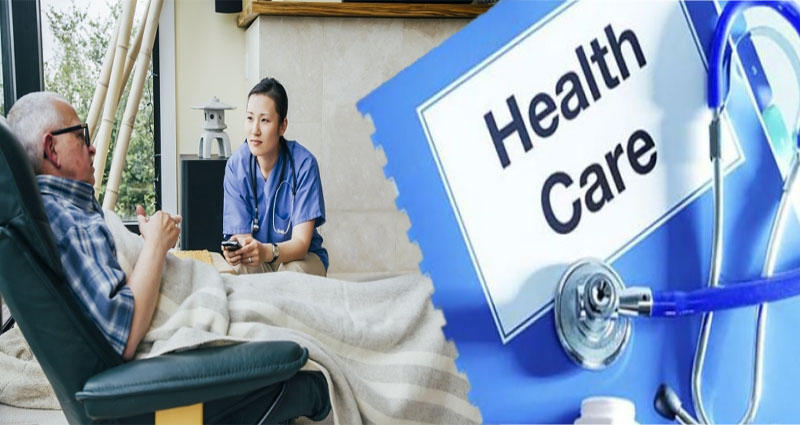HHCN’s annual outlook survey reveals a few things you should know about the industry. Including: The financial health of the industry, staffing shortages, and cost of care. The article is also chock full of strategic and tactical tips and insights from top industry leaders. Interested in attending but unable to attend in person? Buy a virtual ticket to gain access to the audio recordings within 48 hours of the event.
HHCN’s annual outlook survey
The annual outlook survey from Home Health Care News (HHCN) sheds light on the top challenges and opportunities facing the home health and hospice industry. According to the survey, industry stakeholders are prepared to address a variety of issues, including staffing issues and technology investments. In this article, we’ll look at some of the most important issues facing the industry in the coming years. Read on to learn more. Here are some of the most important findings from the survey.
Home Health Care News, a leading B2B media company dedicated to advancing the death care industry, released its annual outlook survey results today. The survey results highlight the latest trends and challenges facing the industry, including the growth of home care as a market, COVID-19, and price transparency. In the survey, more than half of respondents expect to increase their use of contract clinical staff in the next three months. Conversely, 27% expect that the number of contract clinical staff will decline.
Industry’s financial condition
The Medicare Payment Advisory Commission’s (MedPAC) March report predicted that margins for Medicare-certified home health agencies will remain strong or improve through 2021.
However, the report is based on estimates from prior years and extrapolates based on anecdotal reporting in the industry. Despite the industry’s predicted margin growth, many home health insiders maintain that these estimates are inflated.
The report included data that includes the distribution of home health agencies by geography, Medicare and Medicaid certification, total patients served per year, types of services provided, and total number of personnel by type of staff on a full-time-equivalent basis. The report also included a website that allows visitors to compare Medicare-certified agencies, including their ownership structure and services offered. As a result, Medicare-certified home health agencies are more likely to receive Medicare payments than their competitors.
Staffing shortages
Staffing shortages in home health care are one of the biggest concerns facing home health agencies. Many are forced to impose emergency staffing plans, which limit the number of new patients they can take, ask families to take on extra work, and authorize overtime. This shortage has already been building for several years, but it’s now gaining attention with the emergence of COVID-19 and nursing homes as hotbeds for the disease.
According to the Centers for Medicare and Medicaid Services, nearly ninety percent of licensed and Medicare-certified home health agencies have declined referrals in the past year. The agencies are now offering non-medical services to people in need, such as companionship.
These programs prioritize people who are seriously ill or who live alone. Despite these initiatives, many home health agencies remain classified as health professional shortage areas. These organizations are turning to other methods to find and retain qualified employees.
Cost of care
How much does home health care cost? It depends on a variety of factors, but generally, the cost of in-home care services ranges from $175 to $300 per day. If you only need a few hours a week, the cost will be significantly less. Home health care services are not cheap, though. Some options are available for funding long-term care. Below are some things to consider before making a decision about the service you need.
The State of New York has ten geographic and economic regions, with rates varying by region. Among major cities in New York, Buffalo and Utica are the most affordable. The Albany Capital Region has lower rates than the state average of $5,148. The higher rates are found in New York City, while Syracuse, Rochester, and Ithaca are all above the state average. Some regions are much more expensive than others, though.
Predictive analytics
While the accuracy of machines is higher than that of doctors, the ethical implications of relying solely on such tools for health care decisions is debatable. Some argue that the human touch is important for recovery, and that the outsourcing of decision-making in this field is not a respectable approach. The ethical use of predictive analytics in health care should be aligned with accepted standards of care and intervention points, and should also be guided by legislation.
Healthcare organizations are turning to predictive analytics for their data-driven decision-making. This technology can help them deliver better services to their patients. They can anticipate disease progression and identify effective treatment plans. In addition, predictive analytics can help them detect comorbidities that may impact their patients’ health. The benefits of predictive analytics in health care are many, and countless. Read on to learn how predictive analytics can benefit you and your patients.
Patient engagement tools
The benefits of using patient engagement tools are numerous. They can help reduce the number of unnecessary visits while improving patient engagement and education. But the downside is that these devices are expensive, and most insurers do not cover them. That’s why it’s important to understand how the technology works before making the purchase. Below is a brief guide to patient engagement tools. The tools can help home health agencies increase their bottom line by reducing unnecessary trips to the doctor.
The most widely used tool in patient engagement is an online portal. A recent survey found that 88% of respondents viewed patient portals favorably. The most effective portals provide easy access to vital data about patient conditions, such as test results and appointment scheduling. However, to be effective, the portal should be user-friendly, personalized and interactive. For example, it should be easy to navigate, and allow patients to add notes and upload images.








